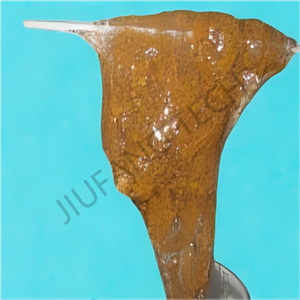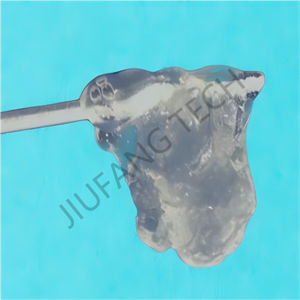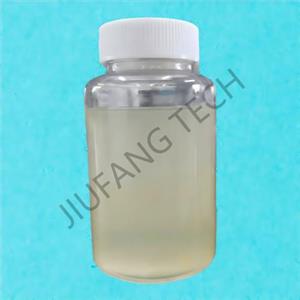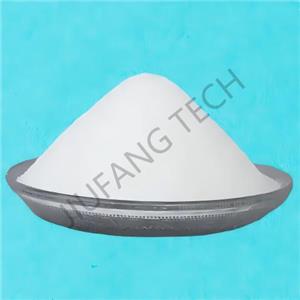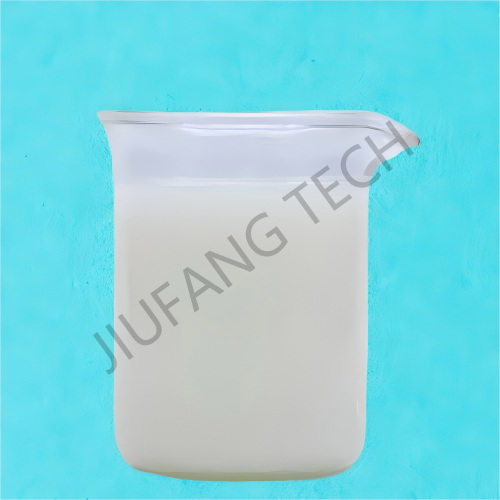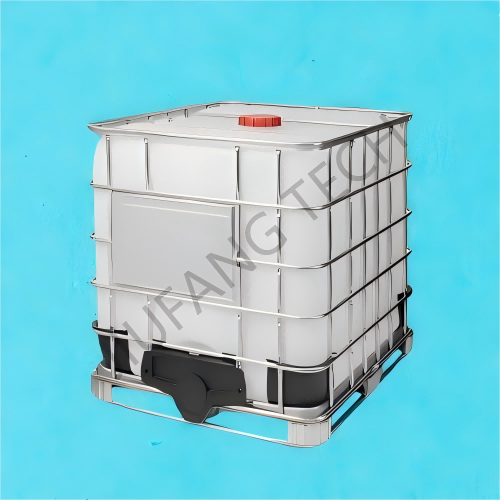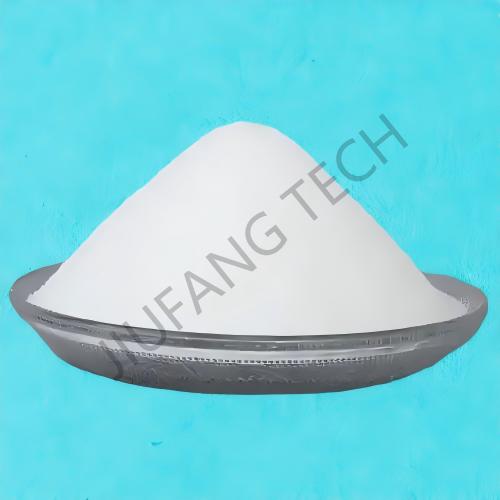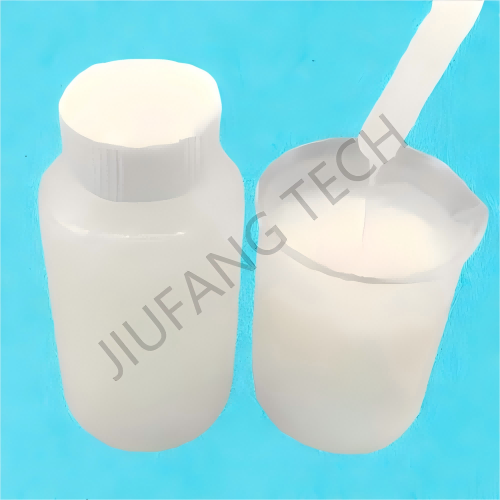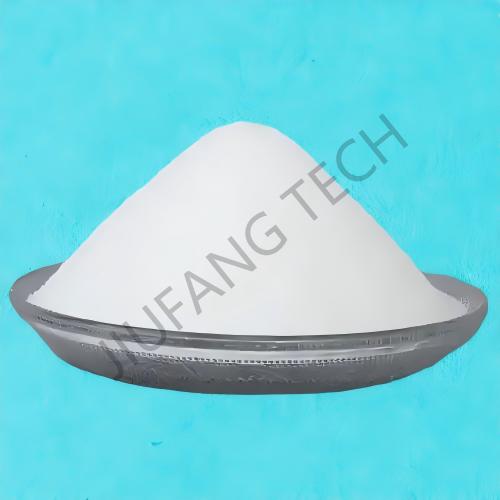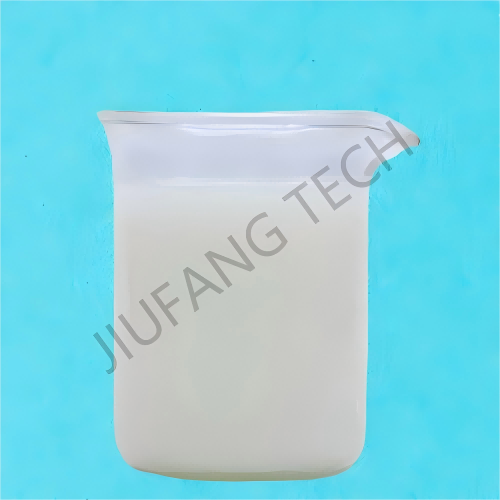
Anionic Polyacrylamide Emulsion For Wastewater Treatment
Brand Jiufang
Product origin Shenyang
Delivery time Lead time: 7days
Supply capacity 2000Metric Tons per Month
1.Anionic polyacrylamide wastewater emulsion could be used for industrial and domestic wastewater treatment.
2.Anionic polyacrylamide could be used for oily sludge treatment.
3.Anionic polyacrylamide emulsion could be used for sewage and wastewater treatment.
Download
Anionic Polyacrylamide emulsion(JF4430) is a water-soluble polymer emulsion. The polyacrylamide emulsion molecular chain is equipped with a large number of anionic groups (such as carboxyl groups), endowing it with excellent flocculation, adsorption, and bridging properties.
In the treatment of chemical polyelectrolyte emulsion wastewater with complex components and diverse pollutants (including suspended solids, colloids, organic matter, heavy metals, etc.), APAM polyacrylamide emulsion has become an important treatment agent due to its(JF4430) high efficiency and adaptability.
The following is a detailed introduction to polyacrylamide emulsion application from aspects such as the action mechanism, application scenarios, advantages, and precautions:
1. Basic Properties and Action Mechanism of Polyacrylamide emulsion for wastewater is a liquid product prepared through the emulsion polymerization process. The polyacrylamide emulsion core advantages include fast dissolution speed, good dispersibility, and stable active ingredients (usually with a solid content of 20%-50%), and the polyacrylamide emulsion molecular weight generally ranges from 8 million to 20 million. In the treatment of chemical wastewater by polyacrylamide emulsion, its action mechanism is mainly based on charge adsorption, bridging flocculation, and sweep flocculation:
Charge Adsorption: The anionic groups (such as -COO⁻) on the polyacrylamide emulsion molecular chain can combine with the positively-charged colloidal particles in the anionic polyacrylamide wastewater (such as metal hydroxides, organic amines) through electrostatic attraction, neutralizing the surface charge of the particles and destabilizing the colloid.
Bridging Flocculation: After the small particles are destabilized, they adsorb the polyacrylamide emulsion molecular chain. With the help of the long-chain structure of the molecular chain, multiple particles are connected to form large flocs of "particle - polymer - particle".
Sweep Flocculation: When the dosage of polyacrylamide emulsion is relatively high, the formed flocs can wrap the suspended particles in the wastewater like a "fishing net", accelerating their sedimentation or filtration separation.
2. Core Application Scenarios in Chemical polyelectrolyte emulsion Wastewater Treatment
Chemical wastewater has complex components (such as containing oil, dyes, heavy metals, high - molecular organic matter, etc.), and polyacrylamide emulsion for wastewater treatment plays a crucial role in multiple treatment processes:
1.Pretreatment Stage: Removal of Suspended Solids and Colloids,Chemical wastewater (such as pesticide, fertilizer, and paint wastewater) often contains a large number of fine suspended particles (such as catalyst residues, unreacted raw materials) and colloids (such as emulsified oil, pigment particles). Direct entry into the biochemical system will lead to excessive sludge load and decreased treatment efficiency.
-Function: Chemical polyelectrolyte emulsion wastewater agent is used in conjunction with inorganic coagulants (such as PAC, PFS). The inorganic coagulant first neutralizes the charge of the colloid to make it unstable, and then chemical polyelectrolyte emulsion wastewater agent aggregates the small particles into large flocs through bridging, which quickly settle, reducing the SS (suspended solids), COD (chemical oxygen demand), and color in the wastewater.
2. Advanced Treatment after Biochemical Treatment: Improving Effluent Quality
After biochemical treatment, chemical wastewater may still retain a small amount of colloidal organic matter, color substances (such as dye wastewater), or tiny suspended solids, and advanced treatment is required to meet the discharge standards (such as COD ≤ 50mg/L).
-Function: Chemical polyelectrolyte emulsion wastewater agent removes the remaining colloids and tiny particles through flocculation, further reducing COD, color, and turbidity, reducing the load for subsequent filtration (such as sand filtration, membrane filtration), and avoiding membrane fouling.
-Applicable Scenarios: It is especially suitable for the deep decolorization of dye chemical wastewater (Anionic polyacrylamide emulsion for wastewater treatment combines with the cationic groups in dye molecules to promote the precipitation of chromophores) and the removal of organic matter residues in pharmaceutical chemical wastewater.
3. Sludge Dewatering: Reducing Sludge Moisture Content
The sludge generated from the treatment of chemical wastewater (such as biochemical sludge, physicochemical sludge) has a high moisture content (usually 95%-99%), a large volume, and high transportation and disposal costs. , as a sludge conditioner, chemical polyelectrolyte emulsion wastewater agent can significantly improve the sludge dewatering performance:
Function: By adsorbing the water on the surface of sludge particles and charge neutralization, it makes the sludge floc structure more compact, reduces the bound water in the capillary pores, and improves the efficiency of dewatering equipment (such as plate - frame filter presses, centrifugal dewatering machines).
Effect: After being conditioned by chenmical polyelectrolyte emulsion wastewater agent, the moisture content of the sludge can be reduced from over 95% to less than 80%, and the sludge volume can be reduced by more than 50%, reducing the subsequent landfill or incineration costs.
3. Application Advantages Compared with Dry-powder APAM In the treatment of chemical wastewater.
The emulsion-type polyacrylamide in water or wastewater treatment has more significant adaptability compared with the traditional dry - powder type:
Fast Dissolution Speed: The emulsion-type of chemical polyelectrolyte emulsion wastewater agent is in a liquid state and does not require long-term stirring for dissolution (usually it can be completely dissolved within 10-30 minutes), which is suitable for the continuous treatment of chemical wastewater and avoids the fluctuation of flocculation effect caused by insufficient dissolution of dry - powder.
Good Dispersibility: It can quickly diffuse in the wastewater, making more uniform contact with pollutants and reducing the "colloid protection" phenomenon caused by local excessive dosing (that is, excessive polymer wraps the particles, which instead hinders flocculation).
More Precise Dosage: The polyacrylamide emulsion for wastewater concentration is stable (can be adjusted by dilution), which is convenient for the metering pump to control the dosage, especially suitable for chemical wastewater with large water quality fluctuations (such as chemical plants with intermittent production).
4. Usage Conditions and Precautions
pH Adaptability: The anionic groups of polyacrylamide emulsion for wastewater are more fully ionized under neutral to weakly alkaline conditions (pH 6 - 9), with a high charge density and the best flocculation effect. If the chemical wastewater is strongly acidic (such as pickling wastewater) or strongly alkaline (such as alkaline cleaning wastewater), the pH needs to be adjusted to the appropriate range first (by adding NaOH or H₂SO₄).
Dosage Control: The optimal dosage needs to be determined through small - scale tests (usually 0.1 - 5mg/L). Insufficient dosage will result in incomplete flocculation, while excessive dosage may lead to an increase in the COD of the effluent (residual polymer).
Synergistic Use: Using it in combination with inorganic coagulants (such as PAC) can significantly improve the effect.
Generally, add the inorganic coagulant first (stir for 1 - 2 minutes), and then add the polyacrylamide emulsion for wastewater (stir slowly for 3 - 5 minutes to promote the growth of flocs).
Storage and Transportation: The polyacrylamide emulsion for wastewater needs to be stored in the dark at room temperature (5-30℃) to avoid freezing or high temperatures that cause demulsification (stratification, precipitation); prevent violent shaking during transportation.
5.Compatibility: Avoid direct contact with strong oxidants (such as Cl₂, H₂O₂) to prevent the breakage of polymer molecular chains (decrease in molecular weight and loss of flocculation ability).
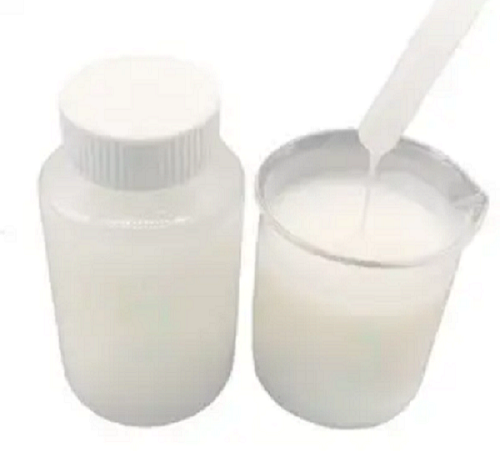
Industry-specific attributes:
| Name | Polyacrylamide Emulsion | |||
| Application | Polyacrylamide in water treatment | |||
| CAS NO. | 9003-05-8 | |||
Other Attributes:
| Appearance | Milky,White Viscous Emulsion | |||
| Content | 40% | |||
| Molecular Weight10*6 | 15~30 | |||
| Specific Granvity(25℃) | 1.0 | |||
| Insoluble Substance(%) | 0.1 | |||
| PH Value | 6.5~7.5 | |||
| Dissolving Time,min | <30 | |||
| Anionic charge(%) | 30 | |||
| Storage Temperature,℃ | 0~35 | |||
| Shelf Life,month | 12 | |||
Supply Ability:
| Supply Ability | 2000Metric Tons per Month | |||
Lead Time:
| Quantity(kilograms) | 1~50 | >50 | |
| Lead Time(days) | 7 | negotiated | |

